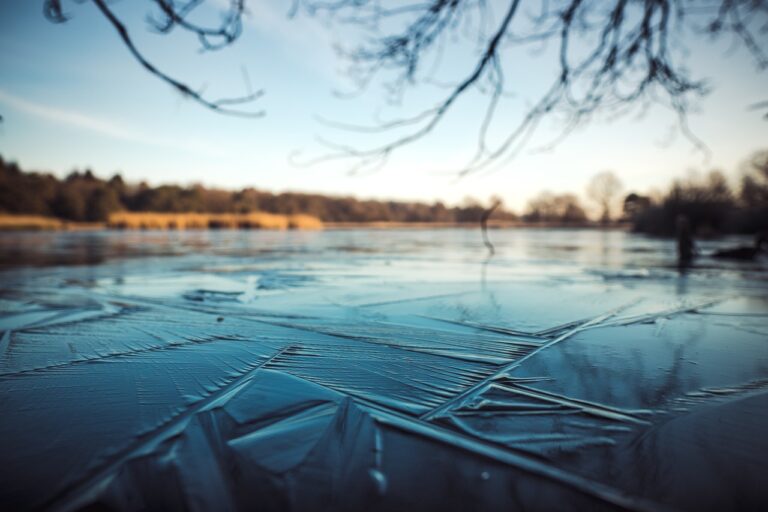Project Description
In the last century the global average temperature has increased by ~1 °C, with the rate of increase doubling in recent decades and the northern high latitudes warming at 2-3 times the rate of the global average. This temperature rise has influenced all parts of the climate system, in particular seasonal temperature cycles. At high latitudes and altitudes one of the main controls on hydrological and biogeochemical processes is the freeze and thaw of lake and river ice. The presence of lake and river ice is predominantly (though not exclusively) controlled by surface air temperature changes. Thus, changes in the dates of freezeup and breakup provide an additional window through which to explore the impacts of anthropogenic climate change on temperature. Although there is model variability on the exact rate of change, the majority of climate models suggest progressive temperature increases throughout the 21st century and a tendency for these changes to be magnified at higher latitudes, likely resulting in shifts in the 0 °C isotherm. Since the majority of lakes and rivers that seasonally freeze are located at high latitudes above the 0 °C isotherm it is crucial to understand the historical patterns and causes of ice phenology change in order to confidently project their future evolution, their climate feedbacks, and the potential knock-on effects on human populations in these regions.
A considerable amount of observational data exists on the breakup and freezeup records of many Northern Hemisphere lakes and rivers, occasionally going back several centuries. However, it is typically only the few longest records that have been exploited in detailed statistical analyses. Recent work by Newton and Mullan (2021) has shown the potential for extracting much more granular detail and insight from exploring the full range of datasets, from decades long, to centuries. Initial work on exploiting these data has shown the potential to generate upwards of 350,000 ice phenology time series that can provide significant insight in local and regional climate changes since 1820. The student will work on these data to 1) determine historical changes; 2) explore the causes of change and climatological relationships; 3) investigate the efficacy of how well these records facilitate lake ice model reconstructions; and 4) consider how to upscale these observations as part of our global efforts to project future lake ice phenology. This project will allow the student to learn a range of skills through the application of different statistical, coding, and GIS methods. The results of this analysis can then be used to understand how, at different scales, global temperature increase will impact lake and river ice phenology, biogeochemical processes, infrastructure changes such as ice roads, and what the potential feedbacks of these future change may be for the wider climate system, e.g. methane release (Emilson et al., 2018). The student will also investigate how these changes compare to other recent palaeoclimate proxies, such as the greening of high latitude regions and lake sedimentation rates. The techniques will provide a basis for a future career in environmental science, in the industrial, government or academic sectors.
CANDIDATE BACKGROUND
The student should be from a geography or environmental science background. They will have strong mathematical/statistical skills and ideally will have some coding experience or be willing to learn (Python and R would be ideal, though this is not essential and the student can be trained). The student should be comfortable working with numerous large datasets.
Image by Matthias Groeneveld from pixabay.com
Supervisors
Andrew NewtonPrimary Supervisor: | Profile: Andrew Newton Email: A.Newton@qub.ac.uk Institution: Queen's University, Belfast Department/School: School of Natural and Built Environment |
Matteo SpagnoloSecondary Supervisor: | Profile: Matteo Spagnolo Email: m.spagnolo@abdn.ac.uk Institution: University of Aberdeen Department/School: School of Geosciences |
Donal MullanAdditional Supervisor: | Profile: Donal Mullan Email: D.Mullan@qub.ac.uk Institution: Queen's University, Belfast Department/School: School of Natural and Built Environment |
Roslyn HenryAdditional Supervisor: | Profile: Roslyn Henry Email: roslyn.henry1@abdn.ac.uk Institution: University of Aberdeen Department/School: School of Biological Sciences |
References
Emilson, E.J., Carson, M.A., Yakimovich, K.M., Osterholz, H., Dittmar, T., Gunn, J.M., Mykytczuk, N.C.S., Basiliko, N. and Tanentzap, A.J., 2018. Climate-driven shifts in sediment chemistry enhance methane production in northern lakes. Nature Communications, 9(1), p.1801.
Newton, A.M. and Mullan, D.J., 2021. Climate change and Northern Hemisphere lake and river ice phenology from 1931–2005. The Cryosphere, 15(5), pp.2211-2234.
QUADRAT Themes
- earth-systems
- environmental-management






















































